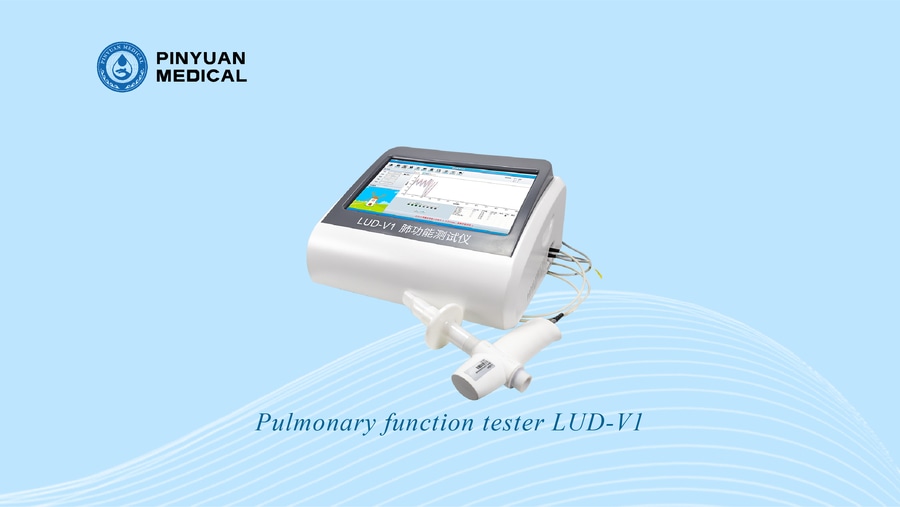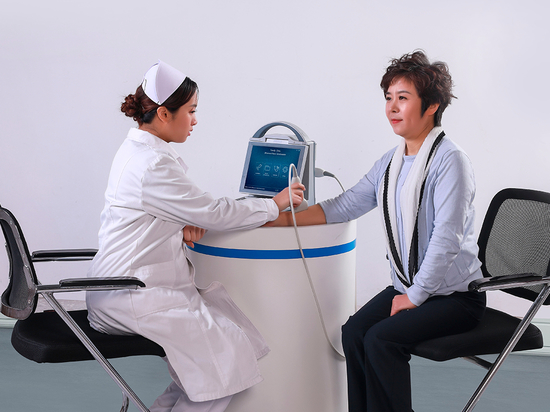
#Industry News
Science popularization time | Learn about lung function test together
Pulmonary function test is a non-invasive, simple, rapid, sensitive and acceptable examination method, which is of great significance for protecting lung health and preventing respiratory diseases.
Pulmonary function test is a non-invasive, simple, rapid, sensitive and acceptable examination method, which is of great significance for protecting lung health and preventing respiratory diseases. Through regular lung function testing, potential respiratory diseases can be detected and treated in time to improve quality of life.
Lung function test is suitable for population
1. Long-term chronic recurrent cough, sputum, suspected chronic bronchitis, bronchial asthma, interstitial lung disease and other diseases.
2. Long-term smoking or passive smoking, as well as long-term exposure to polluting gases and dust in the working environment may lead to occupational lung disease and other high-risk groups.
3. For people diagnosed with asthma, COPD, bronchiectasis and other diseases, pulmonary function testing can help to clarify the severity, guide the corresponding treatment and evaluate the prognosis.
4. There is dyspnea, and the cause is unknown, and it is necessary to identify the cause and determine the location of airway obstruction.
5. Chest tightness and shortness of breath after activities, especially those whose symptoms gradually worsen during activities.
6. For people preparing to undergo surgery (especially thoracic surgery), preoperative pulmonary function testing can determine the tolerance of surgery and the possibility of postoperative complications.
7. It is recommended that people over the age of 40 should be tested for lung function once a year to better achieve early detection and intervention of diseases.
Learning from Lei Feng Memorial Day is on March 5 every year. On March 5, 1963, the Chairman's inscription "Learn from Comrade Lei Feng" was published in the People's Daily in honor of Lei Feng, a hero soldier of a unit of the Shenyang Army who died in the line of duty. Since then, learning from Lei Feng has been widely carried out across the country.
The main content of lung function test
Pulmonary function test mainly includes pulmonary ventilation function test, pulmonary diffusion function test, bronchial dilation test, bronchial excitation test and so on.
1. Lung ventilation function test: used to measure respiratory volume, flow rate, etc., to judge lung ventilation function, and then understand the functional status of respiratory system organs and tissues.
2. Pulmonary diffusion function test: to assist in diagnosis, quantitative evaluation and follow-up of diseases involving the lung interstitial, such as interstitial lung disease, emphysema, pulmonary edema, etc.
3. Bronchial dilation test: used for the diagnosis of diseases complicated with airway obstruction, such as bronchial asthma and chronic obstructive pulmonary disease.
4. Bronchial provocation test: used for the diagnosis of suspected asthma, chronic cough and other diseases and evaluation of the effect of asthma treatment.
Precautions for pulmonary function testing
1. You can eat normally on the day of the examination, but do not smoke 4-6 hours before the examination.
2. Vigorous exercise should be avoided 2 hours before the inspection, and it is recommended to rest quietly for 15 minutes before the inspection.
3. For some items (such as bronchial stimulation test and bronchial diastole test), cold drugs, cough drugs, antiasthmatic drugs, anti-allergy drugs and hormone drugs should be stopped under the guidance of doctors 1-3 days before the examination.
4. During the examination, follow the doctor's instructions to breathe, keep calm, and do not suffer from shortness of breath or suffocation due to nervousness.






